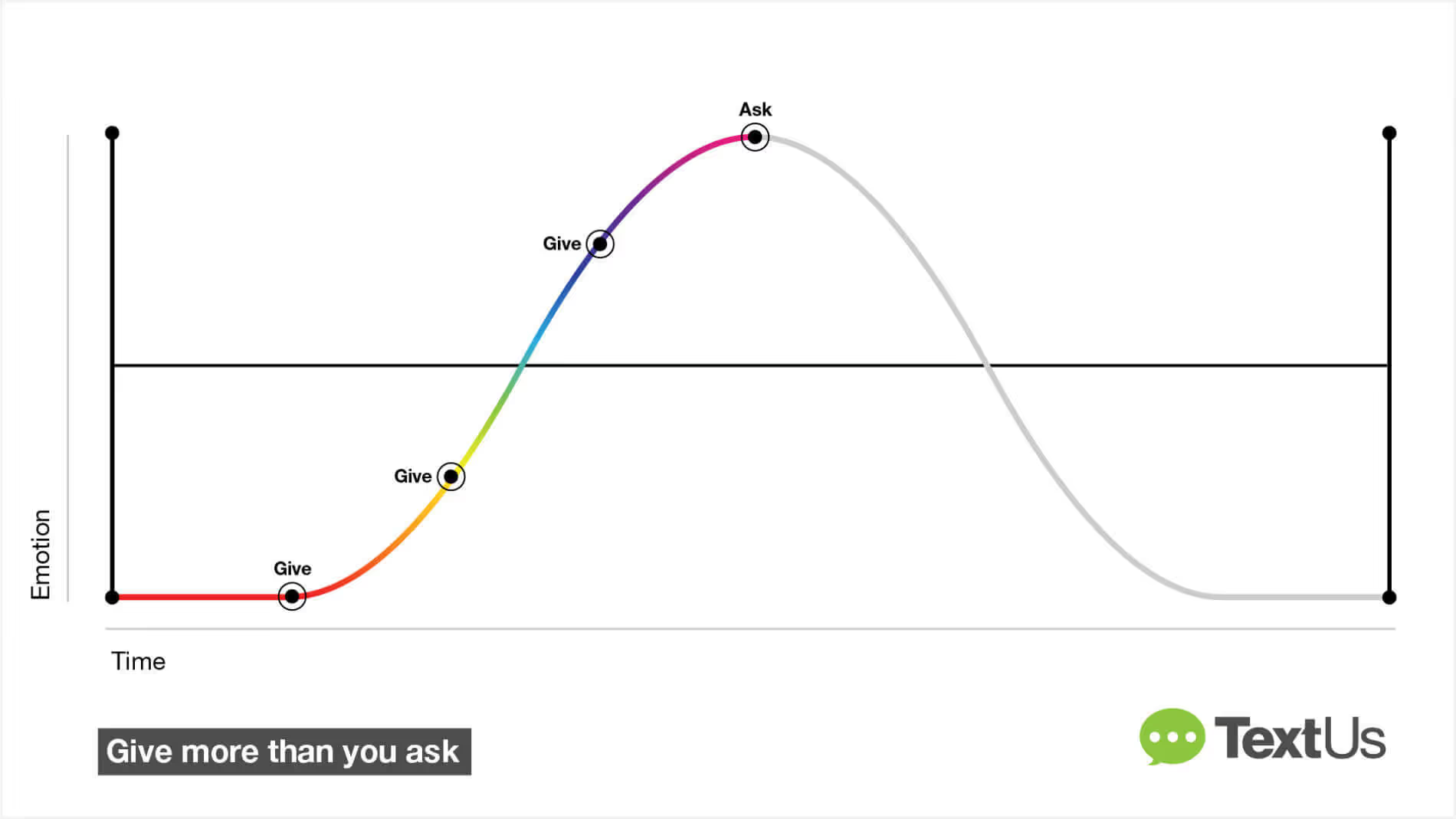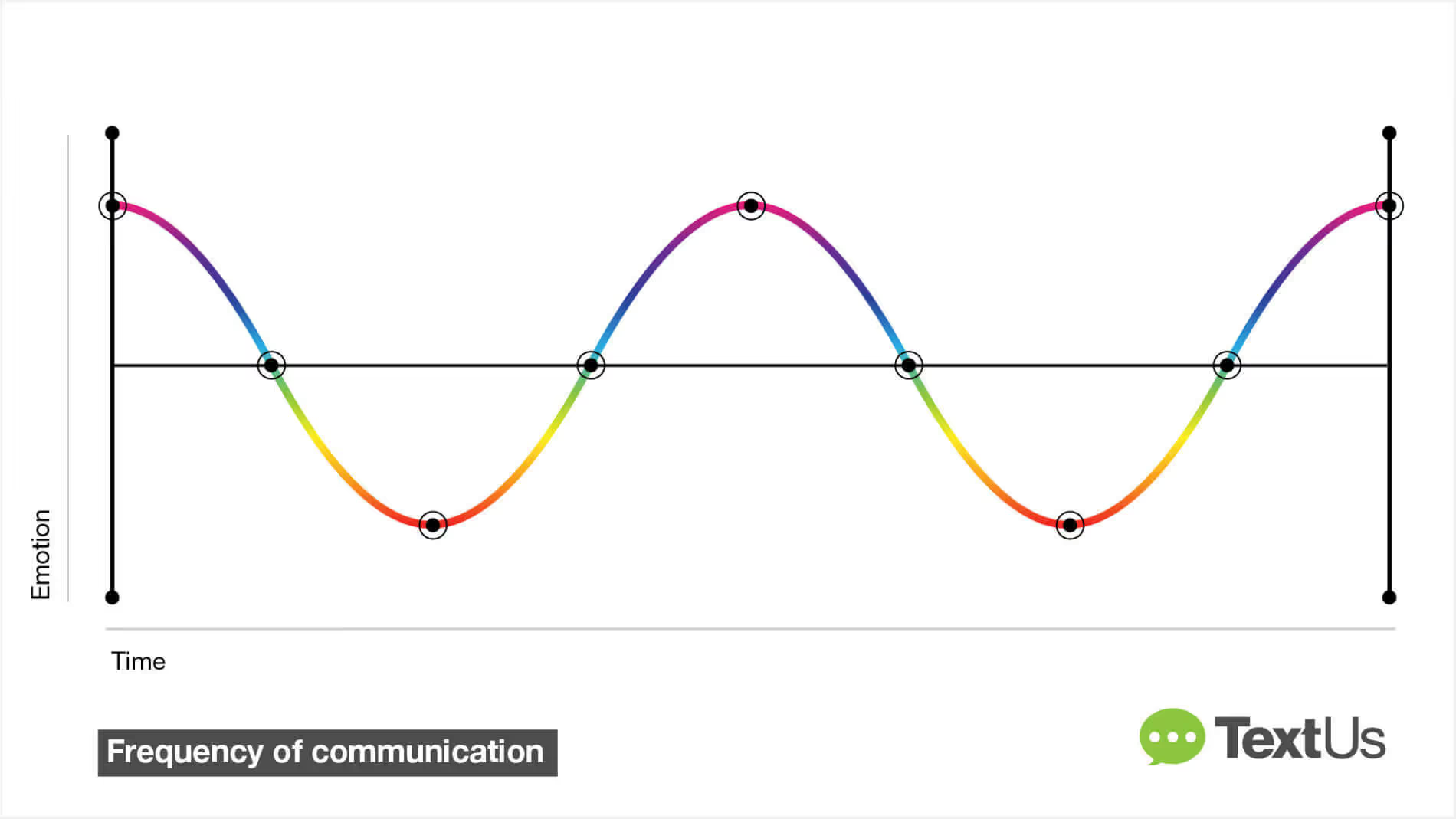How to Avoid Your Text Messages Coming Across Spammy
A guide to help you assess whether the messages you’re sending are helpful and valuable or whether you’re at risk of being a spammer.
Published
April 25, 2020

Now more than ever, it’s important to make your communication meaningful.You may feel pressure in these stressful times to do whatever you can to get your contacts’ attention — even reach out too often or send messages out too broadly – but resist this temptation.Spam is never warranted, but in times when people are focused on big issues, sending nagging, irrelevant, or excessive messages isn’t just ineffective — it could damage your reputation.You may come off as tone-deaf, out-of-touch, or opportunistic. With that in mind, we put together this guide to help you assess whether the messages you’re sending are helpful and valuable or whether you’re at risk of being a spammer.Here’s what to consider before you hit send.
1. Give more than you ask
With the power and speed of real-time communication and text messaging comes some responsibility. No one likes to receive a spam phone call or email — and the same is true with text.When you’re sending a text message right to someone’s pocket, a misstep could damage your personal or brand reputation at any point throughout the customer’s journey.

What’s more, spamming your customers pushes you further from your goal of making a connection, moving them through their journey with you, and closing a deal.To build a relationship, you want to give more than you ask. A spam message is the worst kind of ask — think of every spam message as a withdrawal on your relationship credit. If you’ve given your contacts nothing but irrelevant messages, you’ll be in the red with them faster than you can say “delete contact.”
2. Tone of communication
The tone of your communication is just as important as what information you send. If your tone is overly formal, it can feel cold or off putting. If your tone is overly familiar, it can seem invasive to your contacts.There’s no one-size-fits-all answer in terms of tone. But the one thing that all spam messages have in common: they miss the mark.To avoid this, pay attention to your contacts’ tone and mirror it.And when you’re reaching out for the first time, be as friendly as you would be to someone you were meeting for the first time in person.
3. Type of information
To avoid these dangers, be thoughtful about the type of information you’re sending out.The content of your messages is going to vary depending on where your contacts are in their journey.For example, someone in the Engage stage will be drawn to information that provides value to help them overcome a challenge they are facing.A customer you recently closed will be more attracted to news about feature updates or a recent discount offer.Circumstances will help dictate what kind of information you should send, too. Information about how your service can help people is welcome during a stressful time, while overly promotional or self-focused information will likely miss the mark.
4. Channel of communication
Most likely, you wouldn’t send an email to accept a big job offer, and you wouldn’t call to respond to a simple yes-no question sent over text.Each channel of communication may be used throughout a prospect’s life cycle, but the way you use phone, email, text, and social — and the way they work together to improve how effective you are — changes throughout each stage, too.

Though email is more commonly associated with spam, you can be guilty of spamming over any medium if your outreach is unwelcome, untimely, or irrelevant. So, be thoughtful about which channel you choose.Cold calls are so unwelcome that they’re often considered invasive. A text to a cold contact is not only more acceptable — you can use the right message to warm up a contact to get them on the phone.
5. The importance of sending the right message at the right time
If you remember one thing from this article, it should be this: if you always send the right message at the right time, you never have to worry about being an accidental spammer.By sending the right text at the right time, your communication becomes relevant, not interruptive.By sending the right message at the right time, your outreach adds value instead of being self-serving.The right message combines all the elements above — the right content, the right tone, and the right channel — to deliver a brief, relevant, personalized, valuable message that helps your contact in some way.The right time to send that message is when you think your audience will be most receptive to that outreach. Consider their schedules, their financial cycles, and any major changes that might be impacting their ability to take your message in.Often, the right message at the right time is a text. A text to help you start a conversation over the phone, a text to get a yes or no on a question, a text to share some info, sending it right to someone’s pocket.
6. Frequency of communication
While you’re establishing a relationship with a prospect, you want to contact them often enough to keep your service top of mind without being a nuisance or hurting trust.Later, you’ll have less business need to reach out, but it’s good to nurture your established customers so they don’t feel forgotten.

Spammers famously over communicate. What’s too much? If your prospects are ignoring your messages, unsubscribing from your lists, or flat out asking you to stop, you may want to let up a bit — reach out less frequently.Lastly, whenever you know your clients are going through a tough time, it’s best to error on the side of communicating less frequently. When you do reach out, make sure to make the best of your streamlined touchpoints by sending targeted, personalized, relevant messages.
Continue Reading
Frequently Asked Questions
Business Texting
Built for Results
Create and convert pipeline at scale through industry leading SMS software




